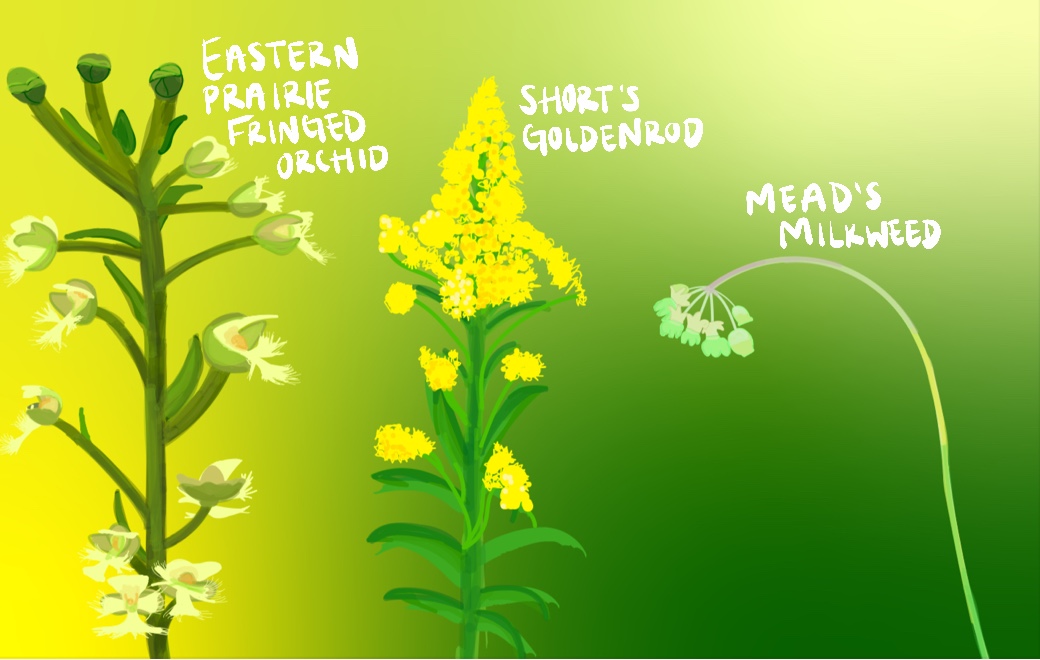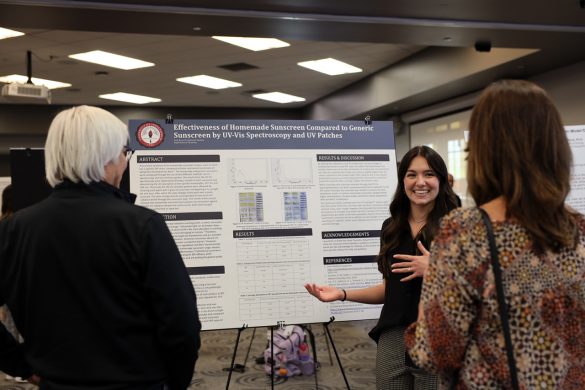The University of Indianapolis hosted Indiana Department of Natural Resources Division of Nature Preserves Botanist Scott Namestnik on Monday. The presentation Namestnik gave involved the topic of rare endangered Indiana plants and was titled “Indiana’s Threatened and Endangered Flora – Why Our Rare Plants Are Rare.” The presentation discussed the rarity of Indiana native flora and why the plants are considered to be rare, according to Namestnik.
Namestnik said he decided to present at UIndy because sharing information surrounding rare plants and the difference between rare and invasive species allows more people to become aware of the existence of the native Indiana flora. He said college campuses have buildings and lawns that can maintain gardens that can contain native plants, but colleges can also own properties off campus that contain natural areas that may provide habitat for rare plants, Namestnik said.
“I think just having college students aware that there are these natural areas and these rare plants is important so that they can potentially study those rare species and help to conserve them long term,” Namestnik said.
According to Professor of Genetics and Plant Biology and Chair of Biology Sandra Davis, she invited Namestnik to give his presentation for a course she instructs titled Biology 350: Plant Biology. Davis said she chooses guest speakers to come to campus to talk and give students an idea about people who study plants and the applications of plant biology outside of the classroom setting. The biology department strives to give students a wide breadth of knowledge in biology, and students that may be pre-med or pre-physical therapy can maintain good foundations in all areas of biology, including plant biology, according to Davis. Students in the biology department have to take introductory biology, which covers subjects such as bacteria, mold, produce and plants, Davis said.

Indiana native plants and according to President of the Indiana Native Plant Society and President of the Monroe County Identify and Reduce Invasive Species coalition Ellen Jacquart said one of the main causes of plant rarity is destruction of habitat. Jacquart said some plants were part of natural plant communities that were always rare, like bogs, as Indiana has almost no bogs. The very few that are left have already been plowed up and turned into farmland, Jacquart said.
“… If you’re a bog plant, you’re out of luck if you’re in Indiana,” Jacquart said. “You have just like two places to live because of destruction of habitat. Then the other big one, the one that I focus[ed] on when I worked for The Nature Conservancy, I focused on invasive species and managing for rare plants to abate the threat of invasive species. That’s probably the second most common reason that a plant is rare, is because its habitat has been not destroyed, but degraded by invasive species coming in and starting to out-compete it.”
The Indiana Natural Heritage Data Center maintains records on rare plants, animals and natural communities that occur throughout the state of Indiana, according to Namestnik. The job of a botanist is to help to maintain lists of endangered and threatened species, conduct surveys for endangered and threatened species and monitor known endangered populations, Namestnik said. According to Namestnik, helping with plant inventories relating to what is on nature preserve properties as well as other natural areas owned by different organizations is part of what he does as a botanist for the center.
“… But the Division of Natural Resources is tasked with maintaining natural areas in the state, dedicating properties with the highest level of protection as dedicated state nature preserves and maintaining those areas in perpetuity so that future generations can see what natural Indiana really looked like,” Namestnik said.
Namestnik said he discussed rare plants, why they are rare and about plants that are at the edge of their global ranges in Indiana during his lecture. He said the state has species that are disjunct, which means that they occur in different parts of the country. According to Namestnik, Indiana does have some plants that are truly rare everywhere they occur. It is important to understand which ones are rare and which areas have plants that have become rare because of invasive species and man-made influences, Namestnik said.
“ … It’s impossible to want to conserve things that you don’t know exist and that you don’t know anything about, and so the more information we can share on that, the better,” Namestnik said.








